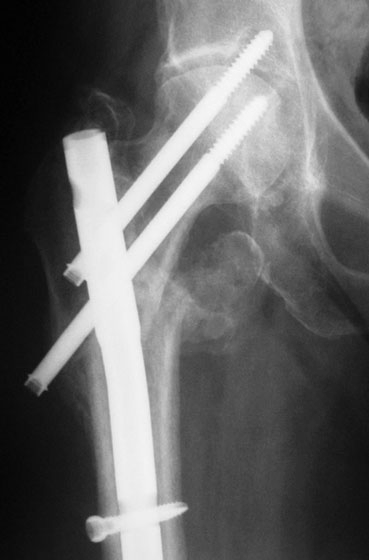Целью интрамедуллярных стержней с двумя стягивающими винтами было увеличение фиксации кости и контроль ротации внутри головки бедренной кости., preventing cutoff and eventual fixation failure. In comparison to an intramedullary nail with a single lag screw, a two lag screw design offers comparable rigidity and stability and has a noticeably higher failure strength.
Z-effect and Reverse Z-effect
Однако, this implant design has resulted in the identification of a new failure pattern known as the Z-effect phenomenon (see picture below), which shows up as the head/neck fragment collapsing, causing the superior lag screw to protrude and the inferior lag screw to migrate lateral to the nail.

The opposite effect, migration of the superior lag screw laterally and the inferior lag screw medially, is described by the reversed Z-effect.
The reason behind the Z-effect
The following theories were put out to explain how the Z-effect developed:
1. Lateral buttress deficit.
2. Unstable medial cortex.
3.The femoral head’s continuous friction and axial loading in varus
4.The osteoporotic head
Ways to avoid Z-effects
Putting the inferior lag screw above the calcar of the femoral neck may be the best way to position the lag screws in the head to prevent Z-effects. This will improve bone anchoring and prevent screwcut-out.Using a dual lag screw intramedullary nail may be something surgeons want to avoid in cases of intertrochanteric hip fractures with significant medial cortical comminution.If a longer inferior screw was employed, the loads were more evenly distributed between the implant and the two cephalic screws in the bone.
Примечание:Авторское право принадлежит первоначальному автору и журналу,Сообщения только для обучения и общения.